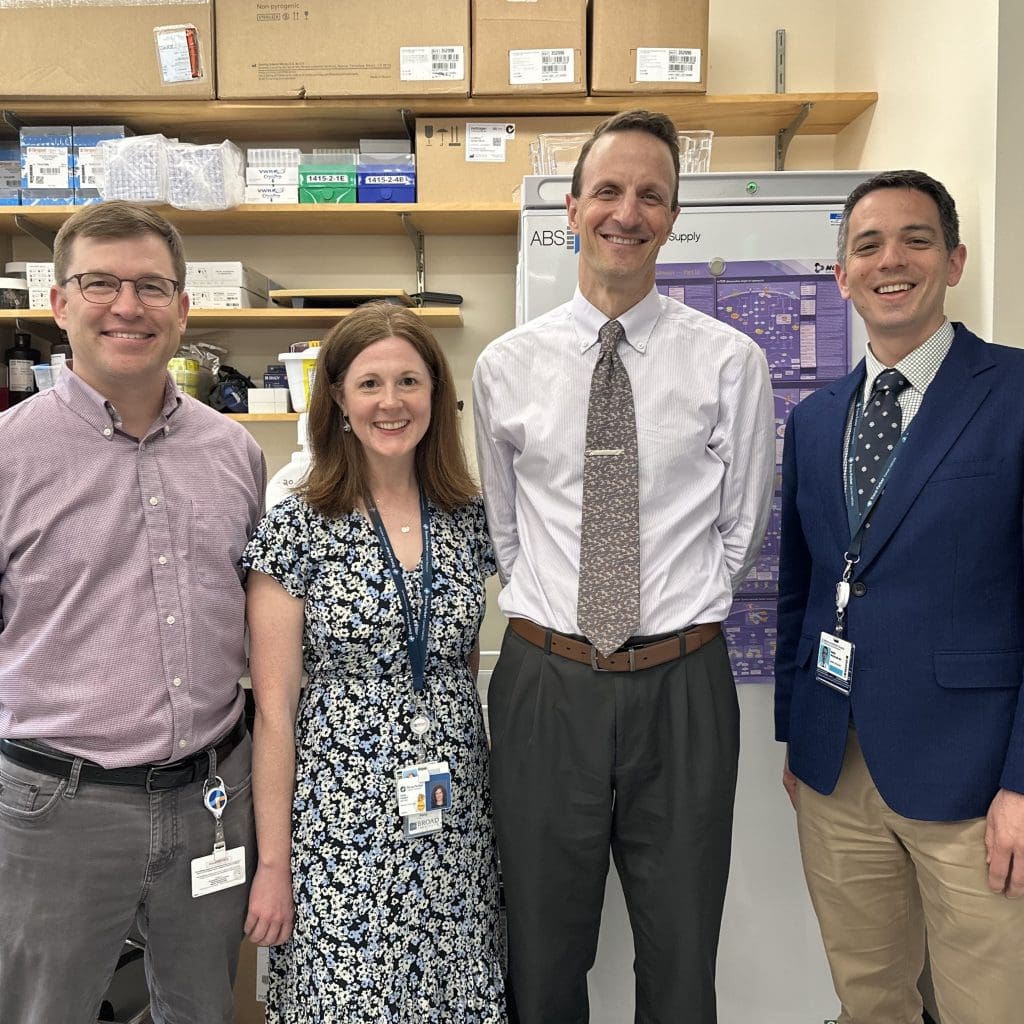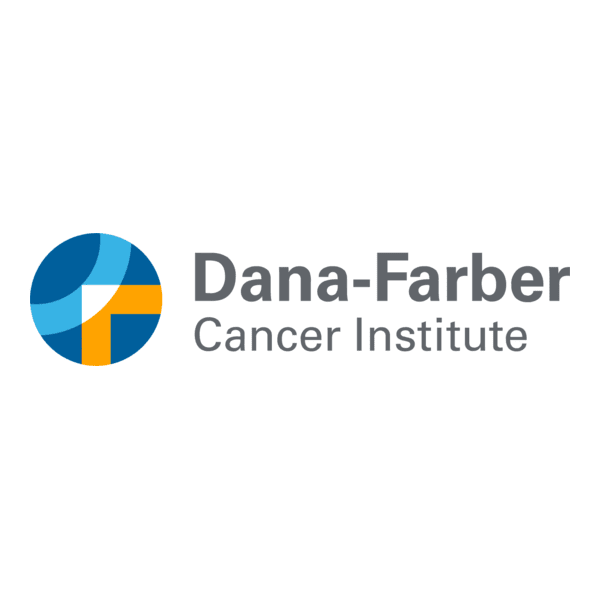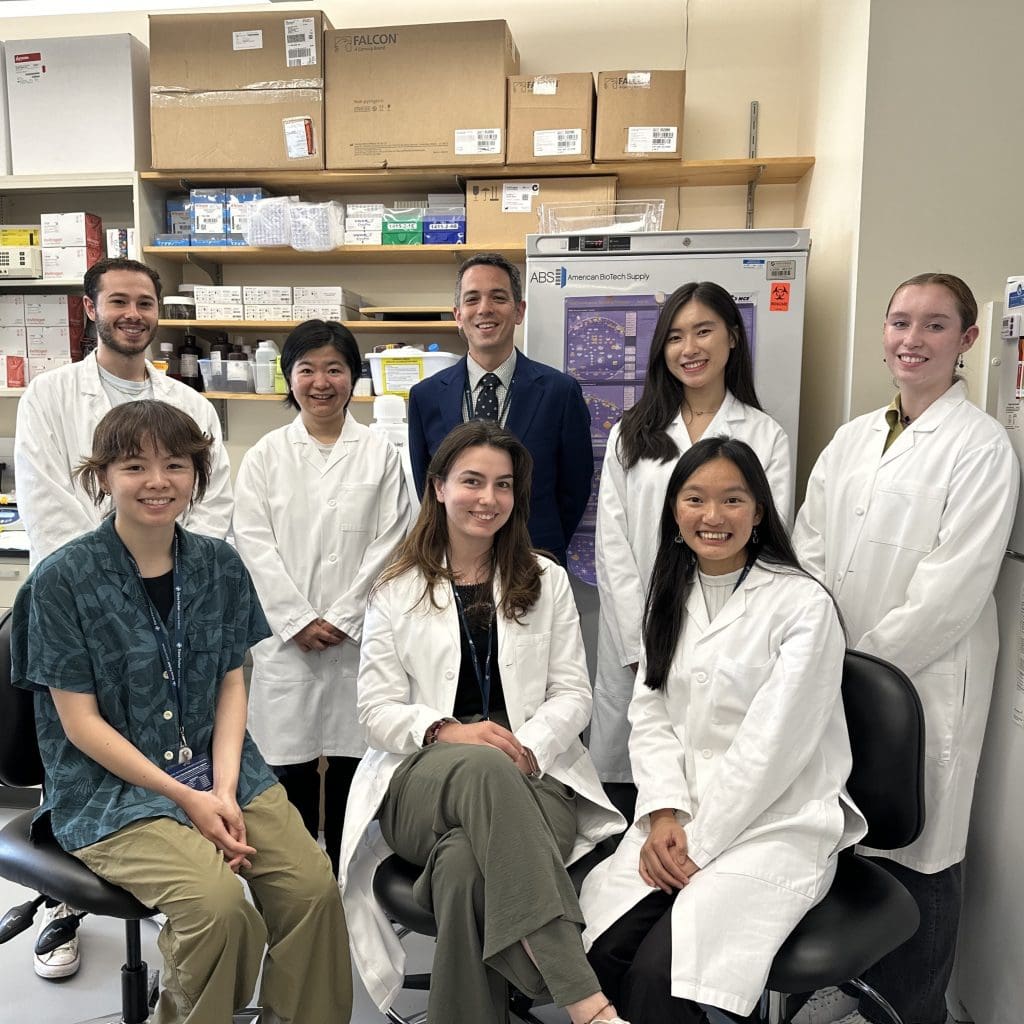A story of the impact of FLF-supported research at the Dana-Farber Cancer Institute
At the heart of breakthrough science lies the support that fuels innovation and encourages bold new directions. One example of the impactful ways we advance our mission to cure follicular lymphoma (FL) is through our seed funding of the world-renowned Dana-Farber Cancer Institute.
Since the initial gift from the Follicular Lymphoma Foundation (FLF) in 2021, researchers at the Dana-Farber Cancer Institute have systematically built a program that tackles FL at every stage of the treatment continuum. As a direct result of the FLF’s initial investment, investigators from across Dana-Farber — including Dr Andrew Lane, Dr Erin Parry, Dr Philippe Armand, and Dr Mark Murakami pictured below — have collaborated to establish a rich FL research program. The growing team of lymphoma investigators have been able to expand their reach, raise additional funding, and secure competitive global grants — all of which are laying the groundwork for faster, more impactful progress in FL research.
The seed funding we received was a game-changer for our work. It gave us the flexibility and resources to explore new avenues we hadn’t previously been able to pursue. Thanks to the FLF’s early support, we’ve been able to attract additional funding, and today our research has momentum. We have been able to accelerate our clinical and translational research, which we hope will bring new and improved treatment options for patients with FL.
Dr Philippe Armand, Chief of the Lymphoma Division at Dana-Farber Cancer Institute and Professor of Medicine at Harvard Medical School
FL is the most common indolent non-Hodgkin lymphoma, yet it remains essentially incurable with existing therapies. The overarching goal of the Lymphoma program team at Dana-Farber is to translate biologic discoveries into the development of tolerable treatment strategies for FL with durable clinical benefit.



Empowering innovation and building integrated research at scale
Building on the initial seed funding, two of Dana-Farber’s key lymphoma investigators were awarded an internationally competitive “Research United to CURE FL” research grant (learn more here about our research program in partnership with the LLS and IFLI). Initiated in July 2024, Dr. Philippe Armand and Dr. Mark Murakami are making excellent progress within their individual projects, while their teams’ close collaboration is amplifying their impact in the field.
The wider team’s thematic focus is on MRD (minimal residual disease) – the small number of cancer cells that remain in the body after treatment. Dr. Armand’s team is leading a clinical trial on a new bispecific antibody treatment as a first-line FL therapy, while also seeking to identify biomarkers that predict patient response and tolerance, paving the way for more personalized and less toxic treatment approaches. By collecting biological samples from this and other trials in the institute, Dr. Murakami is exploring resistance mechanisms in patients treated with bispecific antibody treatments. By thoroughly analyzing the remaining lymphoma cells (MRD), the aim is to identify vulnerabilities that may be targeted with new therapies or innovative treatment combinations in the future.
We’re fortunate to have a very cohesive group, with close links between the laboratory and the clinic. Support from the FLF has allowed us to accelerate our translational research, in association with our clinical trials. Several sub-projects in our grants, which began as pilot studies with the FLF, have been able to advance more quickly and helped our larger program become more effective earlier.
Dr Mark Murakami, Assistant Professor of Medicine at Harvard Medical School
Learn more about the team’s Research United to CURE FL awards here.
A vision for the future: accelerating the path to a cure
This success story is just one example of the transformative impact that early-stage funding can have on the research field. By providing support to innovative teams, we enable them to tackle the challenges that hinder scientific advancement and explore new frontiers in FL patient care.
The ripple effect of this support goes far beyond just one research team. Through our scientific and research programs, we are building a network of scientists, clinicians, and patient advocates who are dedicated to improving the lives of those affected by FL and ultimately, achieving the goal of a cure.
Seed funding plays an essential role in the early stages of any research. It allows talented researchers to test their hypotheses, gather data, and demonstrate the potential of their work. Supporting the Dana-Farber team has shown what’s possible when the right funding and support are provided at the right time. Their success story is not only a win for their team but for the entire FL community — and it highlights the kind of impact we can achieve when we work together towards our mission of curing FL faster.
Dr Mitchell Smith, Chief Medical Officer at the FLF, reflects on the broader significance of seed funding
As the team continues their groundbreaking work, we remain committed to supporting research that drives tangible, lasting change. Their story is a testament to the power of early and intentional investment in innovative research — and to the incredible potential of research teams who, with the right support, can make an extraordinary difference for patients.
Looking ahead: the next chapter of impact
We are excited to continue following the Dana-Farber Cancer Institute team’s progress in their clinical trials and correlative studies. Their achievements remind us that real progress requires investment and, most importantly, a shared vision to accelerate the search for a cure.
Their story will be the first of many in our upcoming series of impact case studies, showcasing how our support is helping to push the boundaries of science and bring us closer to our ultimate mission: to find a cure for FL and fast.